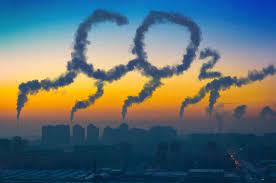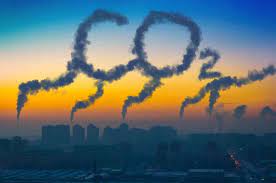
According to researchers of a latest study, a gap has been detected which represents the amount of climate warming carbon emissions that is reported by countries and the actual amount of such emissions that reach the atmosphere as found by independent models. According to the scientists that conducted the study, that gap is equal to about what the United States emits annually.
The report however noted that this gap, which is about 5.5 billion tonnes of carbon dioxide per year, takes place not because any country is doing anything wrong. But that gap is because of the differences that exist between the scientific methods used in national inventories and which are reported by countries according to the 2015 Paris agreement on climate change and the methods that are put to use generally for assessment through international models.
"If models and countries speak a different language, assessing country climate progress will be more difficult," said Giacomo Grassi, an author of a study on the gap and a scientific officer at the Joint Research Center of the European Commission. "To address the problem, we need to find a way to compare these estimates."
Some countries will have to adjust their emissions reductions is what is indicated by the emissions gap as explained in the study published on Monday in the monthly journal Nature Climate Change.
For example, more carbon-absorbing managed forest land is shown by the models that are used by countries such as the United States and other countries compared to what is indicated by independent models, the study noted. About 3 billion hectares more of managed forest land around the world compared to the independent models is shown by the national methods of estimates which allow accepting more flexible definitions for those lands, the study finds.
The downside of this difference in measurement or gap is that results obtained from the national models could lead countries to believe that managed forests are absorbing large amounts of emissions and hence there can be a tendency to not do enough or more for cutting down on carbon emissions generated from cars, homes and factories.
"We are lucky to have those natural carbon sinks," Christopher Williams, an expert on forests at Clark University told the Washington Post, about the study. "However, that carbon uptake is a freebie from nature for which we do not really get to take credit in our battle against climate change."
This difference or gap could become a larger issue because countries are working to reduce carbon emissions such that those are according to the levels as identified in the Paris agreement for limiting the global temperature rise to 1.5 degrees Celsius above pre-industrial levels.
While developing country-specific adjustments would require more work, the study also noted that “countries that had previously used an incomparable benchmark may eventually need to update their target."
(Source:www.thehindu.com)
The report however noted that this gap, which is about 5.5 billion tonnes of carbon dioxide per year, takes place not because any country is doing anything wrong. But that gap is because of the differences that exist between the scientific methods used in national inventories and which are reported by countries according to the 2015 Paris agreement on climate change and the methods that are put to use generally for assessment through international models.
"If models and countries speak a different language, assessing country climate progress will be more difficult," said Giacomo Grassi, an author of a study on the gap and a scientific officer at the Joint Research Center of the European Commission. "To address the problem, we need to find a way to compare these estimates."
Some countries will have to adjust their emissions reductions is what is indicated by the emissions gap as explained in the study published on Monday in the monthly journal Nature Climate Change.
For example, more carbon-absorbing managed forest land is shown by the models that are used by countries such as the United States and other countries compared to what is indicated by independent models, the study noted. About 3 billion hectares more of managed forest land around the world compared to the independent models is shown by the national methods of estimates which allow accepting more flexible definitions for those lands, the study finds.
The downside of this difference in measurement or gap is that results obtained from the national models could lead countries to believe that managed forests are absorbing large amounts of emissions and hence there can be a tendency to not do enough or more for cutting down on carbon emissions generated from cars, homes and factories.
"We are lucky to have those natural carbon sinks," Christopher Williams, an expert on forests at Clark University told the Washington Post, about the study. "However, that carbon uptake is a freebie from nature for which we do not really get to take credit in our battle against climate change."
This difference or gap could become a larger issue because countries are working to reduce carbon emissions such that those are according to the levels as identified in the Paris agreement for limiting the global temperature rise to 1.5 degrees Celsius above pre-industrial levels.
While developing country-specific adjustments would require more work, the study also noted that “countries that had previously used an incomparable benchmark may eventually need to update their target."
(Source:www.thehindu.com)





